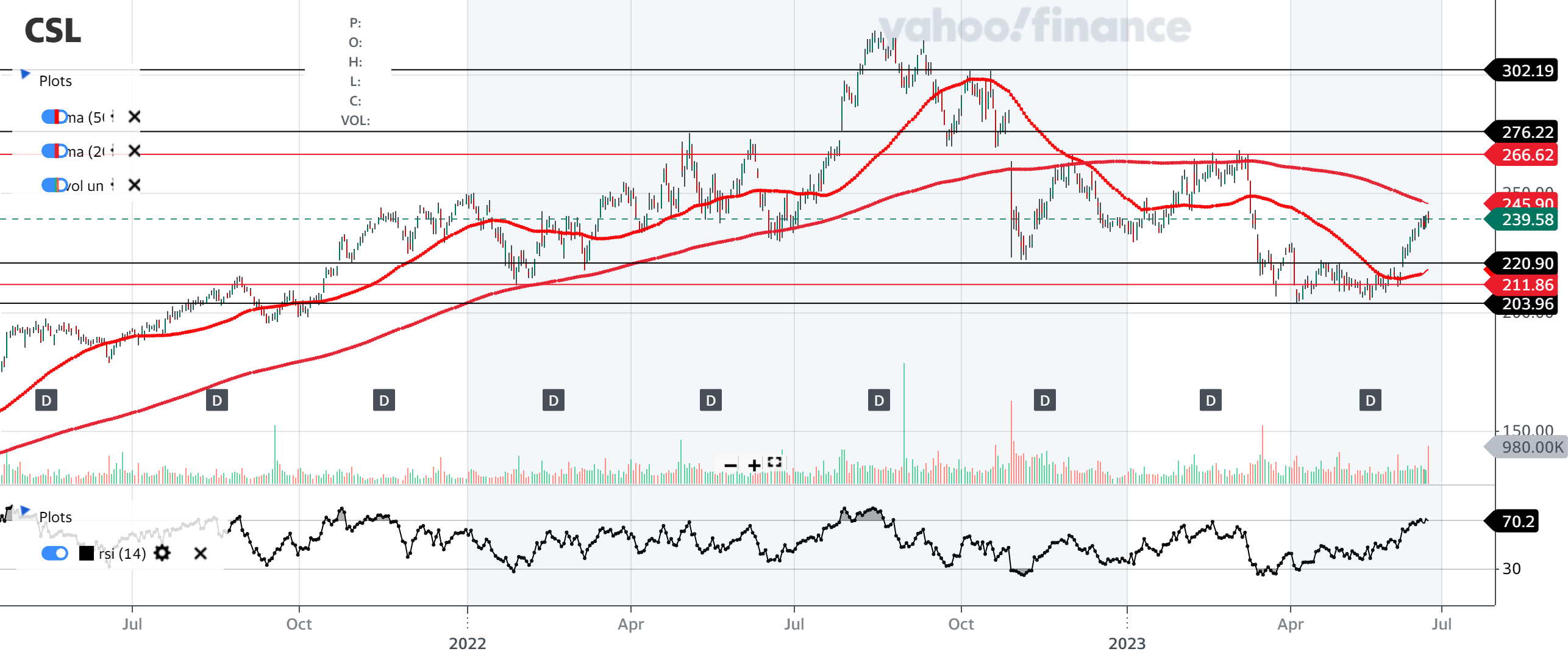Carlisle Companies Incorporated

Fundamental analysis
Carlisle Companies Incorporated was founded in 1917 as the Carlaise Tire and Rubber company. From a tire manufacturer, the company has developed into a multinational concern focusing on four main production sections:
- Building materials (approx. 55% of turnover)
- Weather protection technology (approx. 23% of turnover)
- Interconnection technology (approx. 12% of turnover)
- Fluid technology (approx. 5% of turnover)
The manufacturing PMI has been below 50 for 7 months in a row. Companies respond to lower expected demand by slowing down production and optimizing their processes and inventory levels.
The company has issued a dividend continuously for 43 years.
Before the Covid pandemic, the company created a 2025 vision, which it constantly updates. It is about visions and business estimates of how to grow organically over the next 100 years.
The company’s largest owners are Vanguard (owns 10.6% of shares) and Blackrock (owns 10.1% of shares).
The company is long-term stable with a PE of 8.3. The industry average is 22.3%.
The 2022 dividend was $3 ($0.75 per quarter) per share, representing approximately 1.3% of the stock’s value. The dividend is well covered by own resources.
The results
In the first quarter of 2023, the company achieved a turnover 21% lower than in 2022, mainly due to the expected emptying of its own customers’ warehouses. Another reason for the lower turnover was the worse weather in the USA, which limited the completion of construction and therefore also the collection of material. The largest decrease was recorded in the Building materials section (- 34%). On the contrary, Interconnection Technologies recorded an increase in turnover by 15%.
The company continues to buy back shares. In 1Q, it bought back $50 million in shares and paid out a $38.9 million dividend.
Technical analysis
The company’s chart is clearly defined by numerous supports and resistances. Price tends to bounce off these boundaries and test them repeatedly. In 2022, the company was in a strong uptrend (like most companies). Before the beginning of 2023, the company went into a downward trend according to moving averages, in which it is still today. However, the price around $204 has held steady after several tests over the past few days.
The current pullback has driven the RSI into the overbought zone, but it has not yet left it, so it does not give a sell signal.
Conclusion
According to the available financial indicators, the company is a stable company that pays a dividend. The value of 1.3% of the share price is not a great miracle, but the investor can expect a stable income. Although historical data cannot give a picture of the company’s future development, when dividends have been paid continuously for the past 43 years, it can be assumed that the dividend is important for the company’s management. Big players like Vanguard and Blackrock still believe in the company and own a not inconsiderable 10% each.
On the other hand, a drop in demand in a key segment of the company can spell trouble for the company. The sector PMI shows that the decline affects most industrial enterprises. And the technical analysis now points to a drop in the price even though the support at the price of 204 is still holding. If it is broken, the price may fall further. If the support holds the price, the price may rise or stay near one of the other local supports.